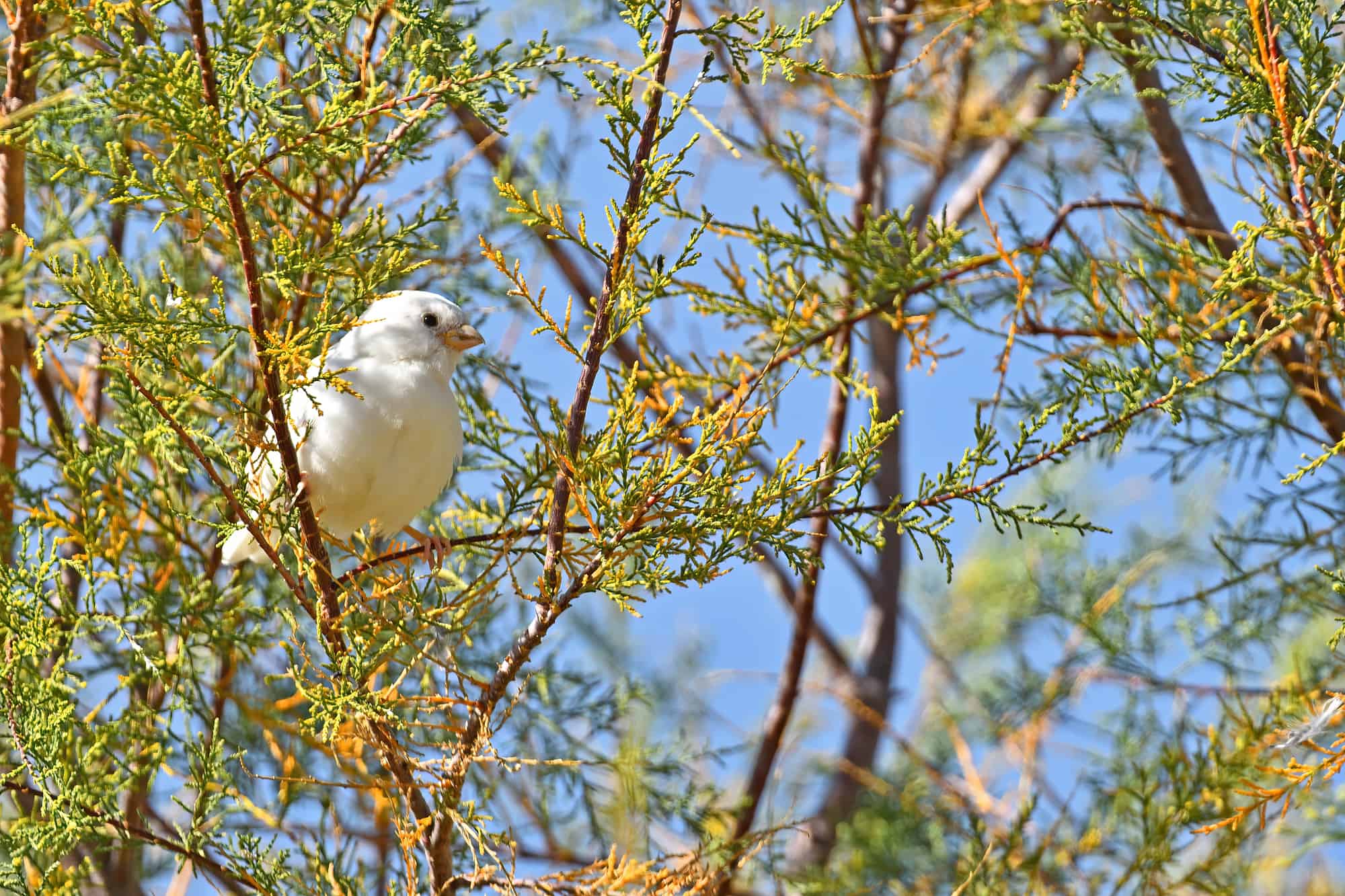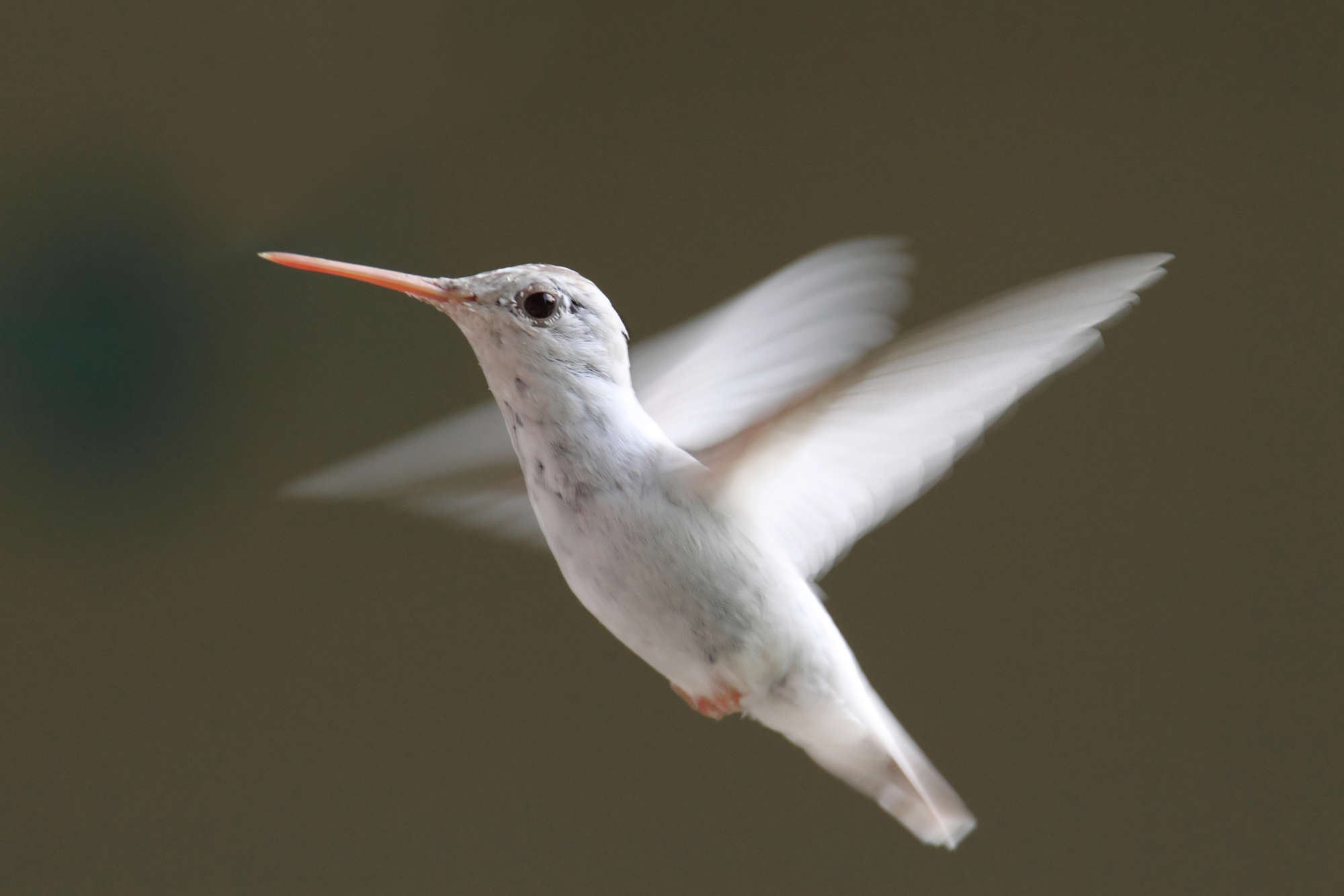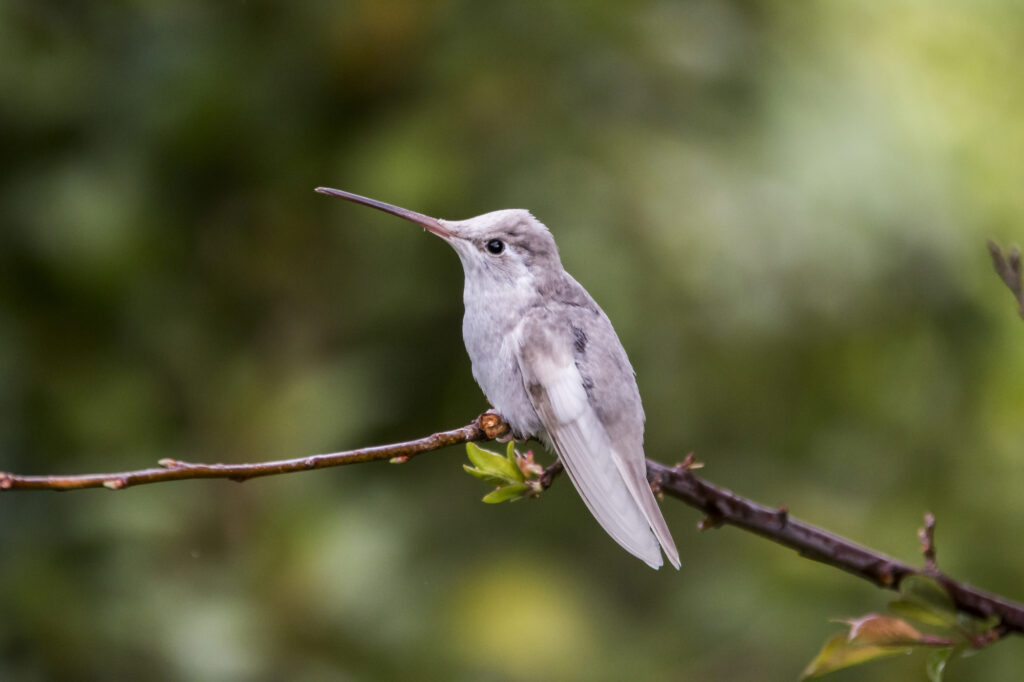As I begin this article on leucistic birds, the first thing I notice is that my spell checker doesn’t recognize the word. Leucism obviously isn’t widely known about, so it’s little wonder that it confuses so many bird watchers each year when they see leucistic birds!
So what on earth are we talking about? Leucism is a genetic condition that causes a partial or total lack of pigment in many types of animals, including birds.
The effects can be beautiful, surprising, and often downright puzzling for ID purposes! That’s why I’ve thrown in a photo challenge to give you some practice. Answers at the end of the article!
Key Takeaways
- Leucism is a rare genetic mutation that causes part or all of a bird’s feathers to lack normal pigment. The condition is distinct from albinism in several ways.
- Leucistic birds range from being pure white, to washed out and blotchy, to slightly frosted in appearance. The condition doesn’t normally affect a bird’s health significantly.
- The condition can make the exact species of birds very difficult to identify, but there are some useful tricks such as studying the bird’s bill, legs, behavior, and companion birds surrounding it.
What Causes Leucism
Leucism is caused by a genetic condition that partially or completely prevents the pigment melanin from penetrating the cells of animal skin, hair, and feathers.
The condition can occur in mammals and reptiles, but it’s especially well-documented in the bird world for its strange and startling effects.
The mutation occurs to varying degrees, as we’ll explore in a moment.
How Is Leucism Different From Albinism
Amateur bird watchers often confuse leucistic birds for albino birds. But leucism is more common than albinism and there are some key differences.
Firstly, albinism is caused by a genetic condition that causes a lack of melanin, leading to loss of color in all parts of the body. So whereas leucism only causes a lack of pigment in feathers, albinism causes a total absence of pigment in every body part, including the eyes, feet, and bill.
As a result, leucistic birds don’t feature the pink eyes, legs, and bill that albino birds do. Normally a close encounter or a decent photo is enough to tell the two conditions apart.
Additionally, leucistic birds don’t normally develop the same eyesight and skin problems associated with albino birds.
The Three Types of Leucism
Pure White
In the most extreme cases, leucism can cause an entire bird’s body to turn white, from crown to tail. These white birds stand out starkly from others and are often confused with albino birds.
Fully white leucistic birds can look so different from their companions that they can be incredibly tricky to identify.
Photo Challenge #1:
Check out this example of pure white leucism below – can you guess which species it is? Note its stout, yellow bill. Can you narrow down the family?

Clue: This species was introduced to North America from Europe in 1851.
I’ll reveal the answers to the photo challenge at the very end of the article!
Washed out or Blotchy
The next level of leucism is birds that are only partially white or slightly washed out but with significant white blotches or absence of color in certain parts of the body.
An interesting feature of blotchy leucism is that it’s normally symmetrical, so the blotchy pattern on one side of the bird is perfectly reflected on the other.
The resulting pigment pattern can be very unique and even extremely attractive. Blotchy leucistic birds can look so exotic that they can also be very difficult to identify!
Photo Challenge 2:
Can you guess the blotchy leucistic bird below? Check out its tufted crest and prominent reddish bill.

Clue: This species would normally be bright red!
Frosted
The most subtle form of leucism is when feathers are only lightly frosted with white tips to their feathers. This dusty or speckled appearance isn’t as dramatic as the other types of leucism, meaning birds are usually still fairly easy to identify.
How To Identify a Bird With Leucism
Because we normally rely so heavily on plumage for bird ID, leucism presents a unique type of challenge! From the photo challenges here, I’m sure you can see how easy it is to mistake a common backyard species for a rare, exotic visitor!
To solve the puzzle, we need to have a sharp eye for other field marks and behavior characteristics to provide clues.
Look for Other Field Marks
Expert bird watchers can often determine a bird species by physical features other than plumage.
A bird’s overall shape and size, as well as the shape of the tail and the presence or absence of a crest, can often give the game away. Because leucistic birds retain a normal eye, bill, and leg color, these can also be used for ID.
Observe Behavior
Another key to placing a leucistic bird is to observe its behavior. If it’s a social or flocking species then other birds of the same species will also often be in the vicinity.
Flight patterns and voice can also be used for ID, especially if the bird can be observed for longer periods.
Photo Challenge 3
From this bird’s classic shape and hovering behavior, it’s a hummingbird. But exactly which type?

Clue: This classic species is only found to the east of the Rocky Mountains.
Bird Leucism FAQs
How Well Do Leucistic Birds Survive in the Wild?
Some people are curious to learn how well leucistic birds fare in the wild. After all, there might be significant disadvantages to losing pigment, especially in cases where the entire body turns white.
The survival rates of birds with leucism likely depend a great deal on the species. Ground-nesting brown birds such as quails and partridges that rely heavily on camouflage for their survival, for example, are unlikely to live long when their bright white body gives their presence away to predators.
On the other hand, for birds that fly around in large flocks and nest in cavities, such as European starlings, leucism is less likely to be a problem – they may frequently live just as long as their pigmented companions!
According to the RSPB, leucistic birds have much higher survival rates than albino birds because, unlike albinism, leucism doesn’t compromise their eyesight.
Does Leucism Affect Some Types of Birds More Than Others?
Leucism has been widely reported across many bird families, but one scientific study reported that it shows up more often in community-breeding birds such as blackbirds and sparrows.
Another study found the mutation occurs more commonly in small isolated bird populations in cities and small towns than in rural areas.
There’s no hard and fast rule, however, meaning you need to keep in mind the possibility of a white bird turning up in any setting!
Final Thoughts
Leucism is a fairly rare genetic abnormality that can often make identifying birds quite perplexing! A good way to identify a leucistic bird is to study their size and shape, the color of their legs, and bill, and also which other birds they’re mixing with.
If you see a leucistic bird, why not try to get a photo and share it with us on social media?
Photo Challenge Bird Species Revealed!
So how did you do with the photo challenge? Did my clues help you to guess the species? Bird number 1 was a pure white leucistic house sparrow, bird number 2, a blotched red cardinal, and bird number 3, a ruby-throated hummingbird.
That wasn’t easy. Give yourself a pat on the back if you got any of them right!

